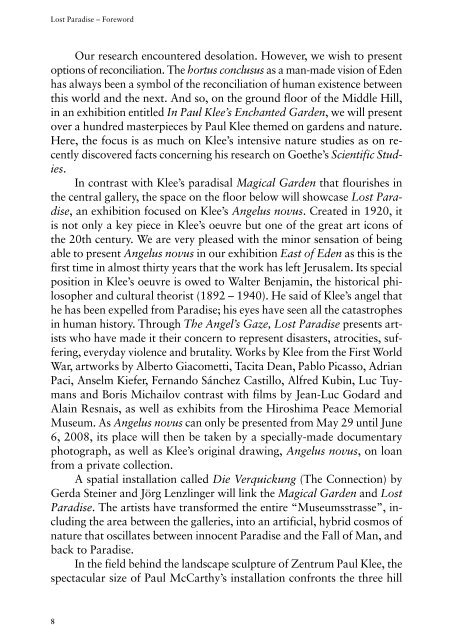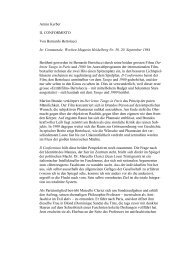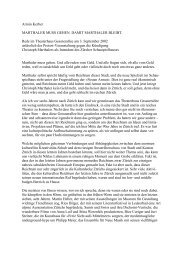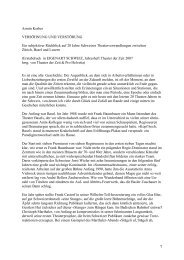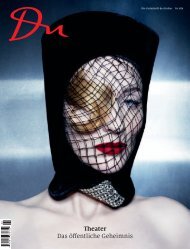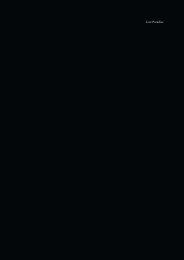You also want an ePaper? Increase the reach of your titles
YUMPU automatically turns print PDFs into web optimized ePapers that Google loves.
<strong>Lost</strong> <strong>Paradise</strong> – Foreword<br />
Our research encountered desolation. However, we wish to present<br />
options of reconciliation. The hortus conclusus as a man-made vision of Eden<br />
has always been a symbol of the reconciliation of human existence between<br />
this world and the next. And so, on the ground floor of the Middle Hill,<br />
in an exhibition entitled In Paul Klee’s Enchanted Garden, we will present<br />
over a hundred masterpieces by Paul Klee themed on gardens and nature.<br />
Here, the focus is as much on Klee’s intensive nature studies as on recently<br />
discovered facts concerning his research on Goethe’s Scientific Studies.<br />
In contrast with Klee’s paradisal Magical Garden that flourishes in<br />
the central gallery, the space on the floor below will showcase <strong>Lost</strong> <strong>Paradise</strong>,<br />
an exhibition focused on Klee’s Angelus novus. Created in 1920, it<br />
is not only a key piece in Klee’s oeuvre but one of the great art icons of<br />
the 20th century. We are very pleased with the minor sensation of being<br />
able to present Angelus novus in our exhibition East of Eden as this is the<br />
first time in almost thirty years that the work has left Jerusalem. Its special<br />
position in Klee’s oeuvre is owed to Walter Benjamin, the historical philosopher<br />
and cultural theorist (1892 – 1940). He said of Klee’s angel that<br />
he has been expelled from <strong>Paradise</strong>; his eyes have seen all the catastrophes<br />
in human history. Through The Angel’s Gaze, <strong>Lost</strong> <strong>Paradise</strong> presents artists<br />
who have made it their concern to represent disasters, atrocities, suffering,<br />
everyday violence and brutality. Works by Klee from the First World<br />
War, artworks by Alberto Giacometti, Tacita Dean, Pablo Picasso, Adrian<br />
Paci, Anselm Kiefer, Fernando Sánchez Castillo, Alfred Kubin, Luc Tuymans<br />
and Boris Michailov contrast with films by Jean-Luc Godard and<br />
Alain Resnais, as well as exhibits from the Hiroshima Peace Memorial<br />
Museum. As Angelus novus can only be presented from May 29 until June<br />
6, 2008, its place will then be taken by a specially-made documentary<br />
photograph, as well as Klee’s original drawing, Angelus novus, on loan<br />
from a private collection.<br />
A spatial installation called Die Verquickung (The Connection) by<br />
Gerda Steiner and Jörg Lenzlinger will link the Magical Garden and <strong>Lost</strong><br />
<strong>Paradise</strong>. The artists have transformed the entire “Museumsstrasse”, including<br />
the area between the galleries, into an artificial, hybrid cosmos of<br />
nature that oscillates between innocent <strong>Paradise</strong> and the Fall of Man, and<br />
back to <strong>Paradise</strong>.<br />
In the field behind the landscape sculpture of Zentrum Paul Klee, the<br />
spectacular size of Paul McCarthy’s installation confronts the three hill<br />
8


